Классификация ZAP для определения внешнего вида Z-линии выглядит следующим образом:
•
Grade 0: Z-линия острая и круглая. Линия может быть волнообразной из-за складок слизистой, но без узких линейных расширений (язычков) или столбчатых островков
•
1 степени: Z-линия нерегулярна и cуществуют похожие на язык выступы и / или островки столбчатого эпителия.
•
II степени: отчетливый, очевидный язык столбчато-появляется эпителия меньше 3 см в длину присутствует. Минимальное требование состоит в том, что ширина у основания языка должна быть меньше его длины.
•
III степени: присутствуют отчетливые языки столбчатого эпителия длиной более 3 см или наблюдается смещение цефалад Z-линии более 3 см.
Аннотация:
Отделение хирургических наук, Упсальская университетская больница, Упсала, Швеция.
Фон : гистологическое присутствие кишечной метаплазии в пищеводе является необходимым условием для диагностики пищевода Барретта. Таким образом, использование термина пищевода Барретта для описания определенных эндоскопических особенностей дистального отдела пищевода нецелесообразно. Не существует общепринятой системы классификации для эндоскопического описания плоскоклеточного слизистого перехода, так называемой «Z-линии». Кроме того, не существует четкого определения нормальной Z-линии. Предложена классификация внешнего вида Z-линии: классификация ZAP. Целью данного исследования было оценить воспроизводимость этой классификации.
Методы: Десять врачей с различным опытом эндоскопии получили 15 эндоскопических фотографий Z-линии, и им было предложено классифицировать их в соответствии с классификацией ZAP. Вторая оценка была проведена между 7 и 15 неделями после первой.
Результаты: Медианные значения каппа находились в диапазоне от 0,72 до 0,90 в отношении внутриобозревательной, а также воспроизводимости между наблюдателями, независимо от опыта с верхней эндоскопией.
Выводы: внутриобозревательная и межобозревательная воспроизводимость классификации ZAP является существенной, и, таким образом, целесообразно использовать эту классификацию для характеристики появления Z-линии при эндоскопии.
Abstract
Background: The histologic presence of intestinal metaplasia in the esophagus is a prerequisite for the diagnosis of Barrett's esophagus. Thus, use of the term Barrett's esophagus to describe certain endoscopic features in the distal esophagus is inappropriate. There is no accepted classification system for the endoscopic description of the squamocolumnar mucosal junction, the so-called “Z-line.” Furthermore, no clear definition of the normal Z-line exists. A classification of the Z-line appearance has been proposed: the ZAP classification. The aim of this study was to assess the reproducibility of this classification.
Methods: Ten physicians with varying endoscopy experience were presented with 15 endoscopic photographs of the Z-line and were asked to classify them according to the ZAP classification. A second assessment was conducted between 7 and 15 weeks after the first. Results: The median κ values were in the range of 0.72 to 0.90 with regard to intraobserver as well as interobserver reproducibility, irrespective of experience with upper endoscopy.
Conclusions: The intraobserver and interobserver reproducibility of the ZAP classification is substantial and thus it is feasible to use this classification to characterize the appearance of the Z-line at endoscopy. ( GASTROINTESTINAL ENDOSCOPY 2002;55:65-9.)
Полный текст статьи:
The ZAP classification of the appearance of the Z-line isas follows:
- Grade 0: The Z-line is sharp and circular. The Zline may be wave-like because of the mucosal folds, but no narrow linear extensions (tongues) or islands of columnarepithelium are present.
- Grade I: The Z-line is irregular and there are tongue-like protrusions and/or islands of columnar-appearing epithelium.
- Grade II: A distinct, obvious tongue of columnar-appearing epithelium less than 3 cm in length is present. A minimum requirement is that the width at the base of the tongue must be less than its length.
- Grade III: Distinct tongues of columnar-appearing epithelium greater than 3 cm in length are present, or there is a cephalad displacement of the Z-line more than 3 cm.
Классификация ZAP, вероятно, будет интересна для практического и повсеместного применения в России, однако до принятия ее Эндоскопическим сообществом может пройти очень много времени.
Вывод:
внутриобозревательная и межобозревательная воспроизводимость классификации ZAP является существенной, и, таким образом, целесообразно использовать эту классификацию для характеристики появления Z-линии при эндоскопии. ( GASTROINTESTINAL ENDOSCOPY 2002; 55: 65-9.)
Список литературы:
1. Armstrong D, Bennett JR, Blum AL, Dent J, De Dombal FT, Galmiche JP,et al. The endoscopic assessment of esophagitis: a progress report on observer agreement. Gastroenterology 1996;111:85-92.
2. Spechler SJ, Goyal RK. Barrett's esophagus. N Engl J Med 1986;315:362-71.
3. Sampliner RE. Practice guidelines on the diagnosis, surveil¬lance, and therapy of Barrett's esophagus. The Practice Parameters Committee of the American College of Gastro¬enterology. Am J Gastroenterol 1998;93:1028-32.
4. Spechler SJ, Zeroogian JM, Antonioli DA, Wang HH, Goyal RK. Prevalence of metaplasia at the gastro-oesophageal junc¬tion. Lancet 1994;344:1533-6.
5. Johnston MH, Hammond AS, Laskin W, Jones DM. The preva¬lence and clinical characteristics of short segments of special¬ized intestinal metaplasia in the distal esophagus on routine endoscopy. Am J Gastroenterol 1996;91:1507-11.
6. Weston AP, Krmpotich P, Makdisi WF, Cherian R, Dixon A, McGregor DH,et al. Short segment Barrett's esophagus: clin¬ical and histological features, associated endoscopic findings, and association with gastric intestinal metaplasia. Am J Gastroenterol 1996;91:981-6.
7. Nandurkar S, Talley NJ, Martin CJ, Ng TH, Adams S. Short segment Barrett's oesophagus: prevalence, diagnosis and associations. Gut 1997;40:710-5.
8. Trudgill NJ, Suvarna SK, Kapur KC, Riley SA. Intestinal
metaplasia at the squamocolumnar junction in patients attending for diagnostic gastroscopy [see comments]. Gut 1997;41:585-9.
9. Clark GWB, Ireland AP, Peters JH, Chandrasoma P, DeMeester TR, Bremner CG. Short-segment Barrett's esophagus: a preva¬lent complication of gastroesophageal reflux disease with malig¬nant potential. J Gastrointest Surg 1997;1:113-22.
10. Csendes A, Smok G, Sagastume H, Rojas J. Endoscopic assessment of the prevalence of gastro esophageal junction intestinal metaplasia in gastroesophageal reflux [in Spanish with English abstract]. Rev Med Chil 1998;126:155-61.
11. Pereira AD, Suspiro A, Chaves P, Saraiva A, Gloria L,de Almeida JC, et al. Short segments of Barrett's epithelium and intestinal metaplasia in normal appearing oesophagogastric junctions: the same or two different entities? Gut 1998;42:659-62.
12. Hackelsberger A, Gunther T, Schultze V, Manes G, Dominguez- Munoz JE, Roessner A, et al. Intestinal metaplasia at the gastro-oesophageal junction: Helicobacter pylori gastritis or gastro-oesophageal reflux disease? Gut 1998;43:17-21.
13. Voutilainen M, Farkkila M, Juhola M, Nuorva K, Mauranen K, Mantynen T, et al. Specialized columnar epithelium of the esophagogastric junction: prevalence and associations. The Central Finland Endoscopy Study Group. Am J Gastroenterol 1999;94:913-8.
14. De Mas CR, Kramer M, Seifert E, Rippin G, Vieth M, Stolte M. Short Barrett: prevalence and risk factors. Scand J Gastroenterol 1999;34:1065-70.
15. Carton E, Caldwell MT, McDonald G, Rama D, Tanner WA, Reynolds JV. Specialized intestinal metaplasia in patients with gastro-oesophageal reflux disease. Br J Surg 2000;87:116-21.
16. Voutilainen M, Farkkila M, Mecklin JP, Juhola M, Sipponen P. Classical Barrett esophagus contrasted with Barrett-type epithelium at normal-appearing esophagogastric junction. Central Finland Endoscopy Study Group. Scand J Gastro¬enterol 2000;35:2-9.
17. Wallner B, Sylvan A, Stenling R, Janunger KG. The esophageal Z-line appearance correlates to the prevalence of intestinal metaplasia. Scand J Gastroenterol 2000;35:17-22.
18. Wallner B, Sylvan A, Janunger KG, Bozoky B, Stenling R. Immunohistochemical markers for Barrett's esophagus and associations to esophageal Z-line appearance. Scand J Gastroenterol. 2001;36:910-5.
19. Wallner B, Sylvan A, Stenling R, Janunger KG.A postfundo- plication study on Z-line appearance and intestinal metapla¬sia in the gastroesophageal junction. Surg Laparosc Endosc 2001;11:235-41.
20. Wallner B, Sylvan A, Stenling R, Janunger KG. The Z-line appearance and prevalence of intestinal metaplasia among patients without symptoms or endoscopical signs indicating gastroesophageal reflux. Surg Endosc. 2001;5:886-9.
21. Cohen J. A coefficient of agreement for nominal scales. Educ Psycol Measurement 1960;20:37-46.
22. Savary M, Miller G. The esophagus: handbook and atlas of endoscopy. Solothurn, Switzerland: Gassmann; 1978.
23. DeNardi FG, Riddell RH. The normal esophagus. Am S Surg Pathol 1991;15:296-309.
24. Landis JR, Koch GG. The measurement of observer agree¬ment for categorical data. Biometrics 1977;33:159-74.
25. Svanholm H, Starklint H, Gundersen HJ, Fabricius J, Barlebo H, Olsen S. Reproducibility of histomorphologic diagnoses with special reference to the kappa statistic. Apmis 1989;97: 689-98.
26. Lundell LR, Dent J, Bennett JR, Blum AL, Armstrong D, Galmiche JP, et al. Endoscopic assessment of oesophagitis: clinical and functional correlates and further validation of the Los Angeles classification. Gut 1999;45:172-80.
VOLUME 55, NO. 1, 2002
GASTROINTESTINAL ENDOSCOPY 69


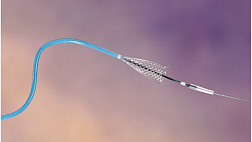

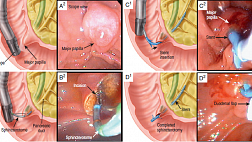

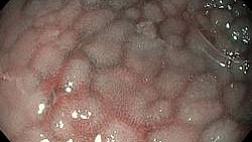
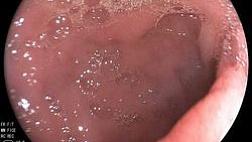
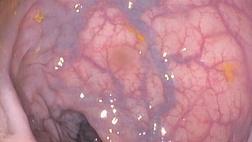






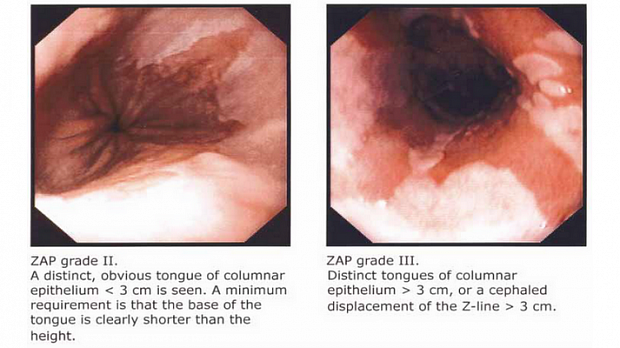
 appearance Reproducibility.png)
 - Adobe Acrobat Pro DC.png)
 - Adobe Acrobat Pro DC.png)
 - Adobe Acrobat Pro DC.png)
 - Adobe Acrobat Pro DC.png)
 - Adobe Acrobat Pro DC.png)
 - Adobe Acrobat Pro DC.png)

 appearance Reproducibility.png)
 - Adobe Acrobat Pro DC.png)
 - Adobe Acrobat Pro DC.png)
 - Adobe Acrobat Pro DC.png)
 - Adobe Acrobat Pro DC.png)
 - Adobe Acrobat Pro DC.png)
 - Adobe Acrobat Pro DC.png)
.jpg)

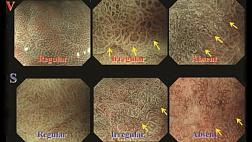
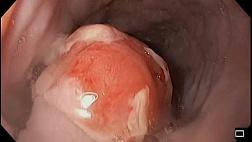


.png)



.jpg)
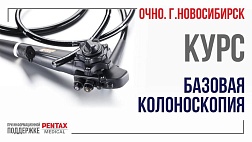

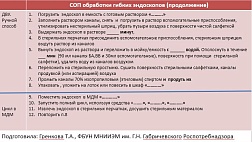













Комментарии